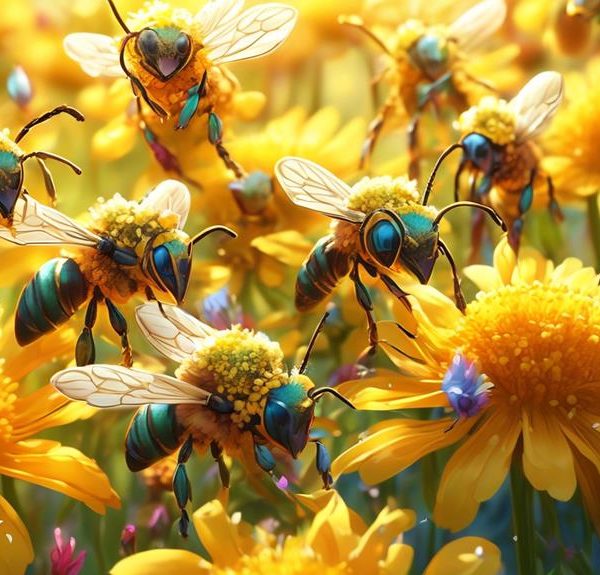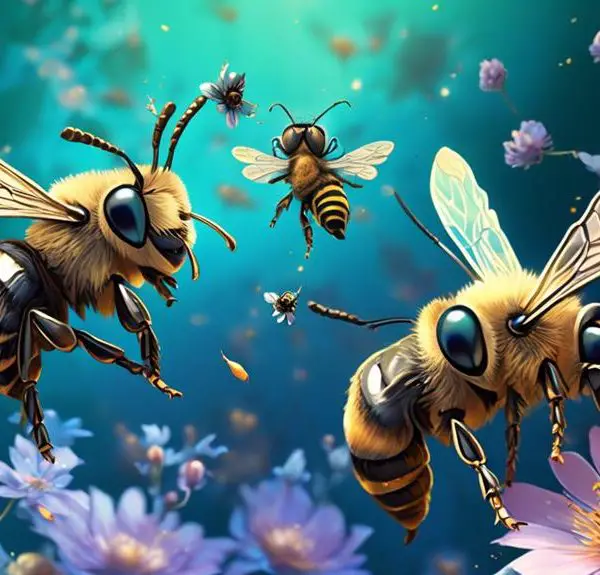Sweat Bees in a Colony' uncovers the intriguing dynamics of these tiny bee colonies, promising surprising revelations about their numbers and lifestyle.
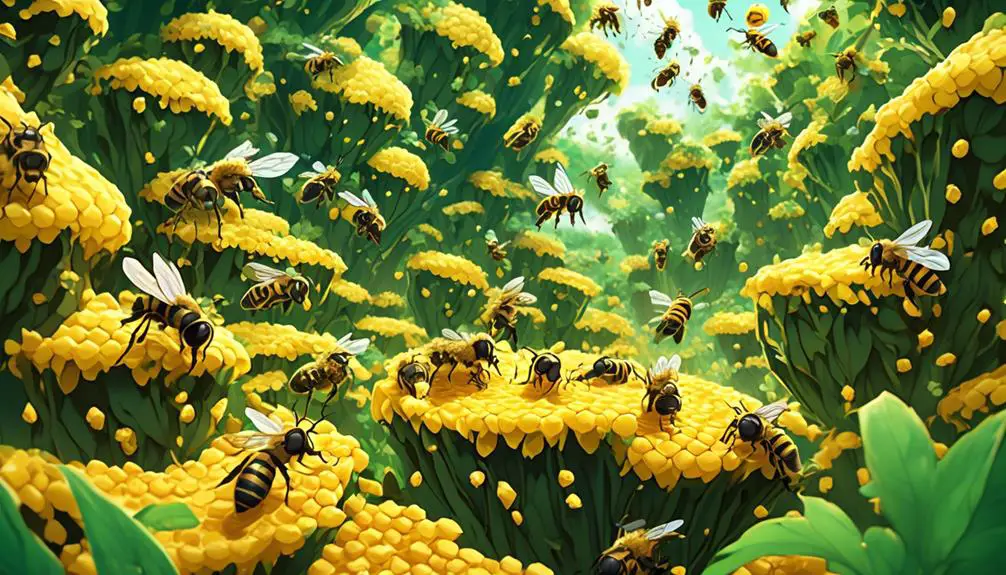
How Many Sweat Bees in a Colony
Did you know that there can be up to 60,000 bees in a single honeybee colony, but when it comes to sweat bees, the numbers are far less?
You might be wondering how many sweat bees make up a typical colony. These tiny, often colorful bees are solitary creatures for the most part, but some species do form small colonies.
Now, the size of these colonies can vary dramatically, influenced by factors such as species type, environmental conditions, and food availability.
Stick around, because we're about to explore just how big or small a sweat bee colony can get.
Key Takeaways
- Sweat bees belong to the Halictidae family and are characterized by their metallic coloring and small size.
- The lifecycle of sweat bees consists of four stages: egg, larva, pupa, and adult, with females laying eggs in the ground and larvae being fed pollen and nectar.
- Factors such as the environment, predators, genetics, and the queen's health can influence the size of a sweat bee colony.
- The average colony size of sweat bees varies based on species and environmental conditions, with some species having colonies of up to 70 workers, while most tend to be smaller, often fewer than 10 bees.
Understanding Sweat Bees
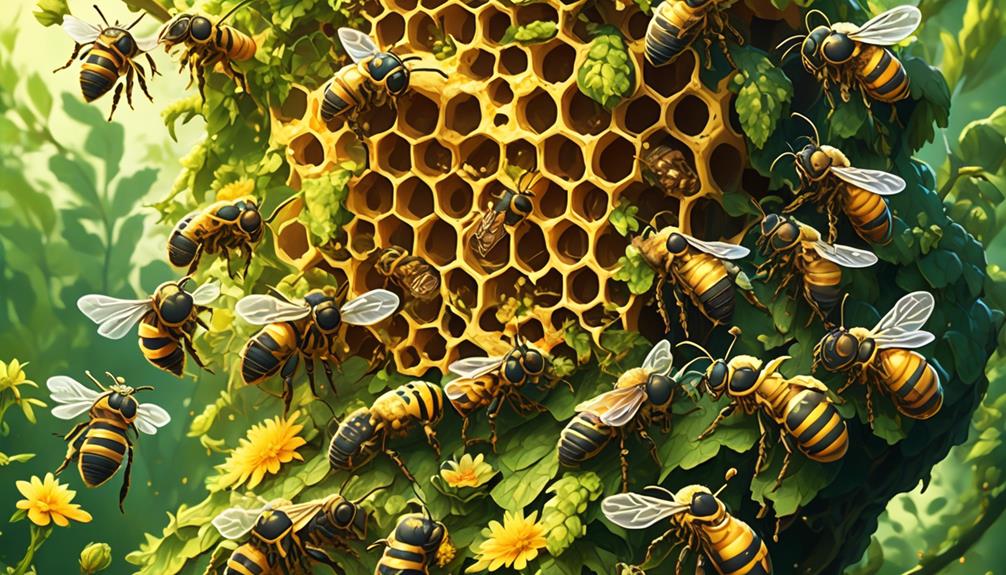
To truly understand sweat bees, you need to delve into their unique biology, behavior, and their crucial role in our ecosystem.
These bees, belonging to the Halictidae family, are renowned for their metallic coloring and small size, typically measuring up to 0.5 inches. They've adapted to diverse environments, showcasing a testament to their biological resilience.
Your interest might pique at their peculiar name, 'sweat bees.' It's derived from the bee's attraction to human sweat, which they consume for its salt content. This behavior, while unsettling, isn't typically harmful to humans. Their sting is often described as less painful than that of other bees.
Analyzing their role in our ecosystem, you'll find sweat bees are vital pollinators. They aid in the reproduction of many flowering plants, contributing to biodiversity and food production. Without them, we'd see a marked decline in various plant species, impacting our food chain.
In terms of their social behavior, sweat bees exhibit both solitary and communal habits depending on the species. Some species are solitary, with females constructing individual nests. Others form small colonies, where they cooperate in raising the brood. Understanding these aspects enhances our comprehension of the sweat bee's importance in our ecosystem.
Lifecycle of Sweat Bees
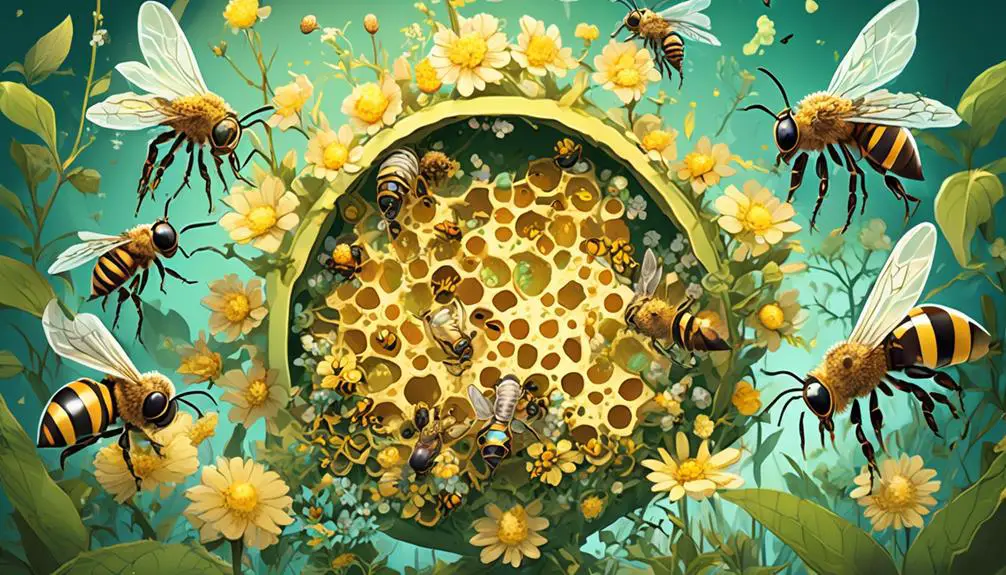
Ever wondered how the lifecycle of a sweat bee unfolds? Let's delve into this intriguing process, unfolding the mysteries of these remarkable insects.
Like other bees, sweat bees' lives are organized into four primary stages: egg, larva, pupa, and adult. The female bee lays her eggs in the ground, where they hatch into larvae. This initial stage lasts about a week, during which the larvae are fed an exclusive diet of pollen and nectar.
The next stage, pupation, is when they transform into pupae. During this phase, they're encased in a protective cocoon, where they metamorphose into their adult form. This transformation can last anywhere from a week to several months, depending on the species and the prevailing environmental conditions.
When they emerge as adults, the sweat bees are ready to carry out their roles in the colony. Males typically live for a few weeks, while females can survive for several months. Throughout their adult life, they'll perform essential tasks, such as foraging for food and defending the colony.
Despite their short lifespan, sweat bees play a crucial role in pollination, making them a vital part of our ecosystem.
Factors Influencing Colony Size
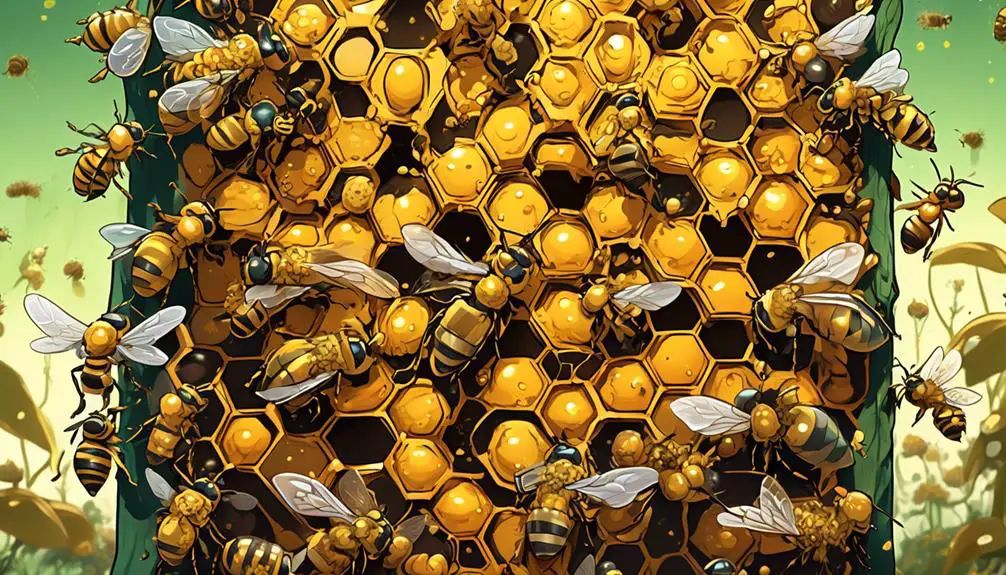
While understanding the lifecycle of sweat bees offers insight into their roles and responsibilities within the colony, it's equally important to consider the various factors that influence the size of these colonies.
One factor is the environment. The availability of food sources and nesting spaces directly impacts the capacity for a colony to expand. In areas rich in pollen and nectar, you'll find larger colonies. Similarly, the presence of ample nesting spaces can foster growth.
Another influencing factor is the presence of predators. High predation rates can limit colony size, as survival becomes the primary focus over reproduction and expansion.
Genetics also play a role. Certain sweat bee species naturally form larger colonies due to inherited traits promoting social behavior.
Finally, the health of the queen bee is crucial. A healthy queen produces more offspring, leading to larger colonies.
Factors Affecting Colony Size | Description |
|---|---|
Environment | Availability of food and nesting spaces |
Predators | High predation rates can limit colony growth |
Genetics | Certain species naturally form larger colonies |
Queen's health | A healthy queen produces more offspring |
Keep these factors in mind when studying sweat bee colonies.
Average Sweat Bee Colony Count
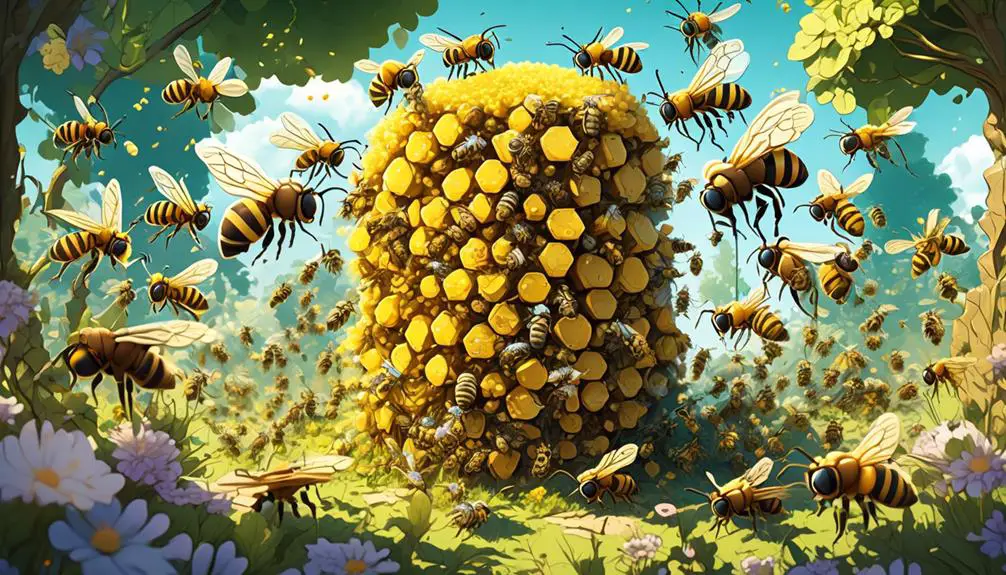
In light of these factors, you might be curious about the typical size of a sweat bee colony. The average sweat bee colony count isn't as straightforward as you might expect. Variability is key, largely dependent on the particular species of sweat bee in question and their environmental conditions.
For some species, such as Lasioglossum zephyrum, colonies can reach up to 70 workers. However, most sweat bee colonies tend to be smaller, often containing fewer than 10 bees. In fact, solitary sweat bees, which don't form colonies, are also common.
The size of a colony is also influenced by the bee's life cycle. Early in the season, a queen might be the only bee present in the nest. As she lays eggs and they hatch into workers, the colony's size can gradually increase. By contrast, towards the end of the season, as workers die off and only new queens survive to hibernate through the winter, colony sizes decrease.
Importance of Sweat Bee Colonies
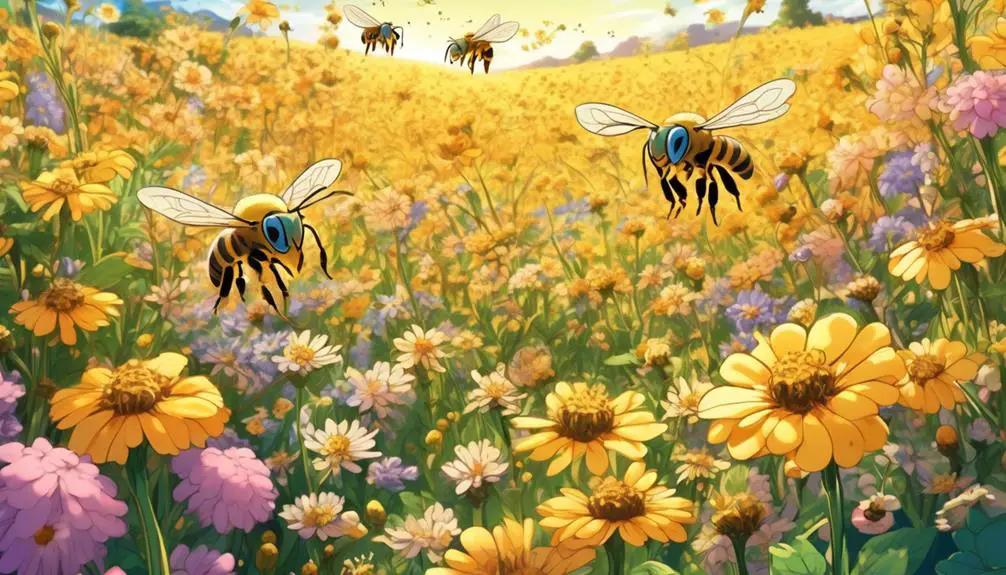
Understanding the importance of sweat bee colonies, you'll find their ecological role is both fascinating and essential. They're pivotal pollinators, aiding in the reproduction of various plants. Without them, you'd see a drastic decrease in plant diversity and productivity, impacting entire ecosystems.
Their fascinating behavior also contributes to their ecological importance. Unlike honeybees, sweat bees aren't eusocial; they display a spectrum of social behavior, from solitary to communal. This diversity in social structure provides a unique opportunity to study evolutionary transitions in social behavior.
You'll also find that sweat bees are significant bioindicators. Their presence or absence can reveal a lot about an ecosystem's health. A decline in their population might indicate environmental stressors like habitat loss, pesticide exposure, or climate change. Therefore, monitoring sweat bee colonies can provide valuable insights into the impacts of human activities on local ecosystems.
In terms of economic importance, sweat bees play a crucial role in the pollination of commercial crops. They're particularly effective at pollinating blueberries, onions, and sunflowers. Hence, they're vital for maintaining agricultural productivity and food security.
In essence, sweat bee colonies are indispensable for both ecological balance and human survival.
Conclusion
In essence, sweat bee colonies vary in size due to environmental factors and species. While some colonies host fewer than 50 bees, others can house up to 1000.
These colonies play a crucial role in our ecosystem, providing vital pollination services.
So, next time you spot a sweat bee, remember, you're seeing a small part of a potentially large and important colony.

